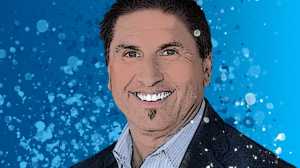By Nik Edlinger on August 30, 2019 in People
Welcome to the fourth segment of the Changemakers, a Senior Housing News (SHN) series of interviews that spotlight leaders who are shaping the future of senior living through innovation. Yardi is sponsoring the series, and for this installment, we are excited to share that the featured company is a longtime Yardi client.
Meet David Eskenazy, president of Merrill Gardens based out of Seattle. Merrill Gardens has over 30 communities across the U.S., and they’ve even begun expanding into China – a move that Eskenazy helped lead and that few other providers have yet taken. Eskenazy joined Merrill Gardens back in 2015, and since then has pushed the organization forward with a focus on efficiency, technology and the data insights it brings.
During his interview with SHN, Eskenazy spoke at length about his passion for pulling, analyzing and leveraging data. “I’m kind of a data nut,” he shared. Eskenazy believes that clear reporting – and an understanding of what the numbers really mean – are essential, not just for himself but for the managers in Merrill Gardens’ communities.
“And so we built,” Eskenazy said. “To the point where I believe now we probably have the most sophisticated business analytics tools in the industry.” The results are impressive. He and his team can quickly dial in on sales, marketing or care and see what’s working and what’s not throughout the organization.
But what did Eskenazy change at Merrill Gardens for his team to attain that level of instant insight? You don’t need to wonder. He explains more in this excerpt from the SHN interview:
How did you get the tools you needed to achieve this [business analytics function]?
Fundamentally, you have to see where your information is.
For example, when I went to Aegis, we had eight different systems, one for the receivables cycle, one for the general ledger, one for the payroll hours … all this stuff was everywhere. One of the things that we had to do was consolidate.
At Merrill, we did a similar thing, but we didn’t have quite as many different systems. We were basically able to get down to two basic data sources, Kronos and Yardi. We also bolted on Yardi EHR, which is an electronic health record module that takes all the [resident] assessments, and we dial those assessments down to points. Those points are now inside Yardi. That’s a measure of the acuity of the residents. Now we have the acuity of the residents, all the financial information, the hours, and the payroll dollars, direct and indirect, in pretty much two places in the cloud.
But, we had to build a system that could draw from both of those two. Every single night we have a download that goes into a central depository — that’s our data bank — that we then hook into for our business analytics, so it gives us pretty close to real time.
Can you provide an example of how this works in practice?
We can tell which individuals or which communities have been dialing it down further in their shifts, or which individuals are clocking in late or clocking in early, and that sort of thing. Or a sales funnel. We can see how leads are turning into tours, turning into deposits, turning into residents, in very real time, and we can pick any date and community scheme we want. We can pick a region or maybe all the communities opened in 20 years.
Read the entire interview on SHN.


